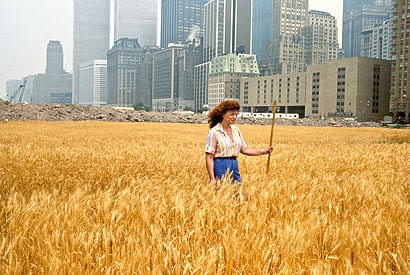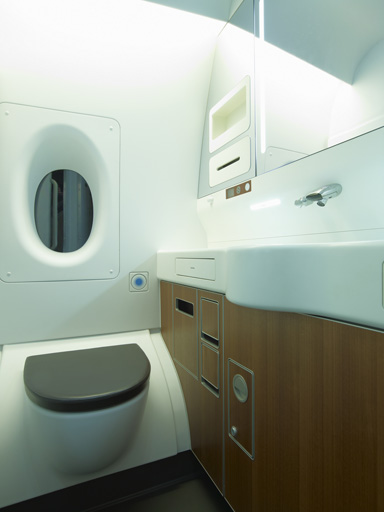|
The Spiral Jetty by Robert Smithson, Great Salt Lake, 1970 (image: Gianfranco Gorgoni, Agnes Denes, Lisa Rastl) |
||
|
What do artists and architects have to say about our abusive relationship with the natural world? And since that topic is so timely, why does the most radical work come from the 1970s and 80s, asks Justin McGuirk Robert Smithson’s Spiral Jetty, which the American artist curled deep into Utah’s Great Salt Lake in 1970, and Dubai’s archipelago map of the world spring from the same human impulse. OK, Smithson was rejecting the gallery to engage directly with the sublime whereas the ersatz islands of The World are a marketing gimmick to sell luxury villas to footballers, but they are both tremendous acts of will. The kind of will that man has pitted against nature since he learned to stitch together an animal-skin parka. Only now there are billions of us and we have superior firepower. We no longer need protecting from nature, it needs protecting from us. That is the rough topic of the Barbican’s Radical Nature exhibition, in which Dubai’s islands don’t appear but Smithson’s film about Spiral Jetty does. It’s quite a theme, the great problem of our age no less: our relationship with our ecosystem, or as the subtitle describes it, “Art and Architecture for a Changing Planet 1969–2009”. It’s a bold and timely idea, and the artists and architects collected here make an impressive roster. They range from Smithson and the conceptual art heroes Joseph Beuys and Hans Haacke to madcap renegades like Buckminster Fuller and Ant Farm right up to experimental architects like R&Sie(n) and Philippe Rahm. What do they all have in common? The simple answer is that they all present a particular vision of nature (though not necessarily with any ecological concerns in mind). More complicated to pinpoint is what it all amounts to. Is there a message in the undergrowth? One of the problems with the show is that few of the works leave much imprint. Anya Gallaccio’s bolted-together tree felt rather mawkish. Henrik Håkansson’s Fallen Forest, a square of rainforest lain on its side and apparently growing sideways (but perhaps just quietly dying) under the hot lights was mildly amusing. Philippe Rahm, usually so intriguing, felt less relevant than usual with his oboe-inflated windbag. Even great contributors seemed to struggle here. The Centre for Land Use Interpretation is one of the most interesting organisations in the American arts, but not according to this slide show about an Alaskan oil pipeline. And then Beuys – both maverick genius and founding member of the German Green party, who could be better? Yet his Honeypump at the Workplace felt strangely out of context, just a pile of hose and machinery on the floor, its energy vanished. Somehow it doesn’t communicate here. If you asked me in what context you might have Beuys and Buckminster Fuller in the same show, I’d probably struggle. It would have to be something really huge, like “nature”. Beuys’ work was radical and he was certainly interested in nature, but it is not about “radical nature” – far from it, it channels the atavistic, mythical kind of old. You might as well include the paintings of Claude Lorrain (died 1682), they too are suffused with a kind of mystical earth spirit. Hell, everybody’s work is about nature to some degree (alright, a slight exaggeration, but you get the point). The works that really live up to this topic mostly come from a time when Beuys was still active. Take Ant Farm, a collective who in the 1970s tried to create a human embassy among the dolphins, or Agnes Denes, who in 1982 planted a two-acre wheat field two blocks from Wall Street on land worth $4.5 billion. Those photographs of wheat billowing in front of the World Trade Centre remain the most persuasive representations of the idea of urban farming – a resurgent topic these days – yet created. Tomas Saraceno’s balloon evocations of floating cities have a touch of Sixties ambition to them – he dares to dream – but otherwise the contemporary works are a tad wry and ironic. Simon Starling’s raft for rhododendrons … meh. You have to read the catalogue to get the point of it, and that always makes for frustrating art. Perhaps we’re starting to believe the argument peddled by the environmental fatalists – that the damage has already been done and is irreversible – and that is why this is such a po-faced set of works. However, as I write this, one of Denes’ wheat fields is about to pop up on a strip of railway in Dalston, east London, so perhaps some fresh, inspiring imagery will yet emerge from this show. I also understand that French social architects EXYZT will be making a windmill bakery to turn the wheat into bread – not exactly radical but fun. Perhaps, as Smithson advocated, all the best stuff really does happen outside of the gallery.
Wheatfield – A Confrontation by Agnes Denes, 1982 (image: Gianfranco Gorgoni, Agnes Denes, Lisa Rastl) |
Words Justin McGuirk |
|
|
||
|
Mobile Wilderness Unit – Wolf by Mark Dion, 2006 (image: Gianfranco Gorgoni, Agnes Denes, Lisa Rastl) Radical Nature is at the Barbican, London, until 18 October |
||





















